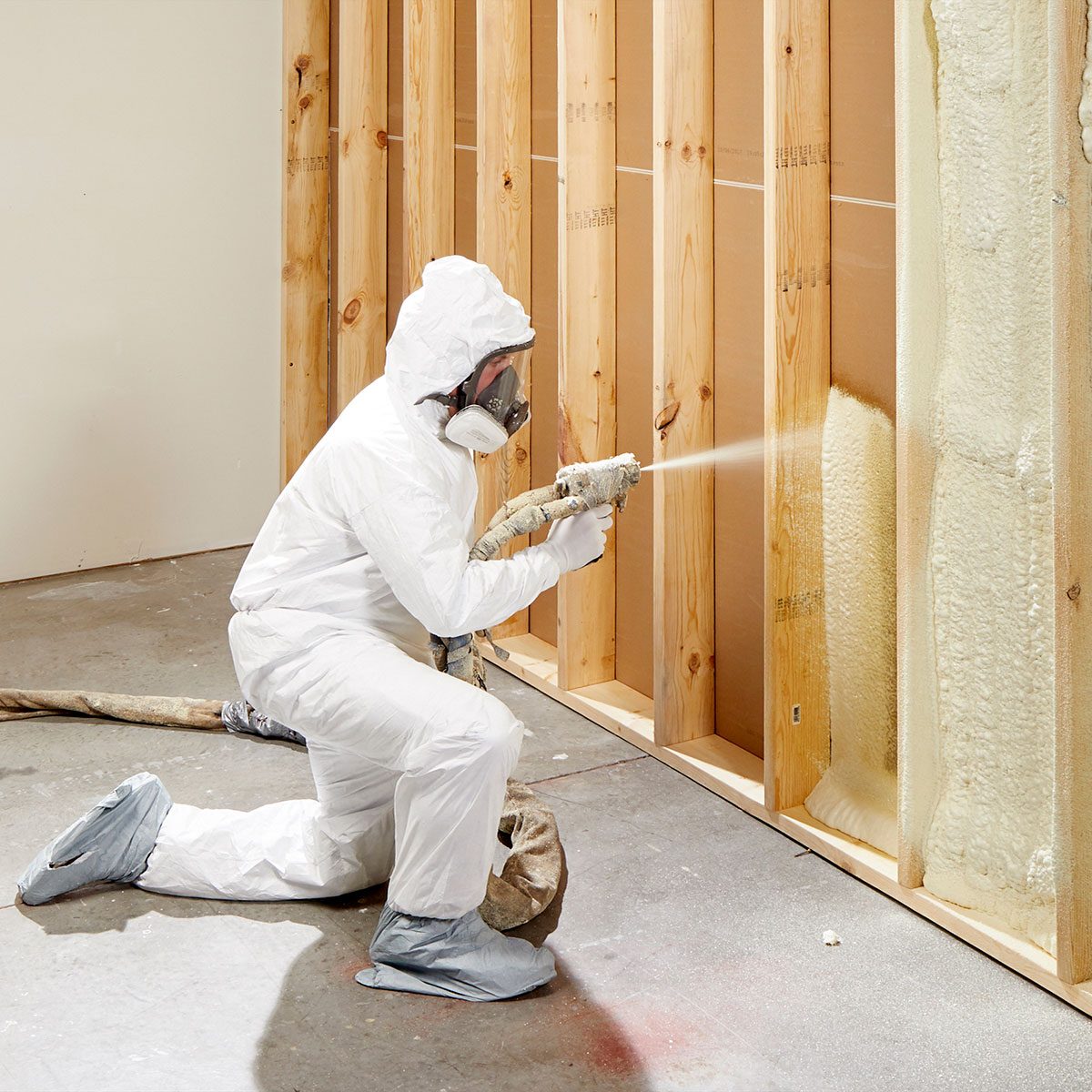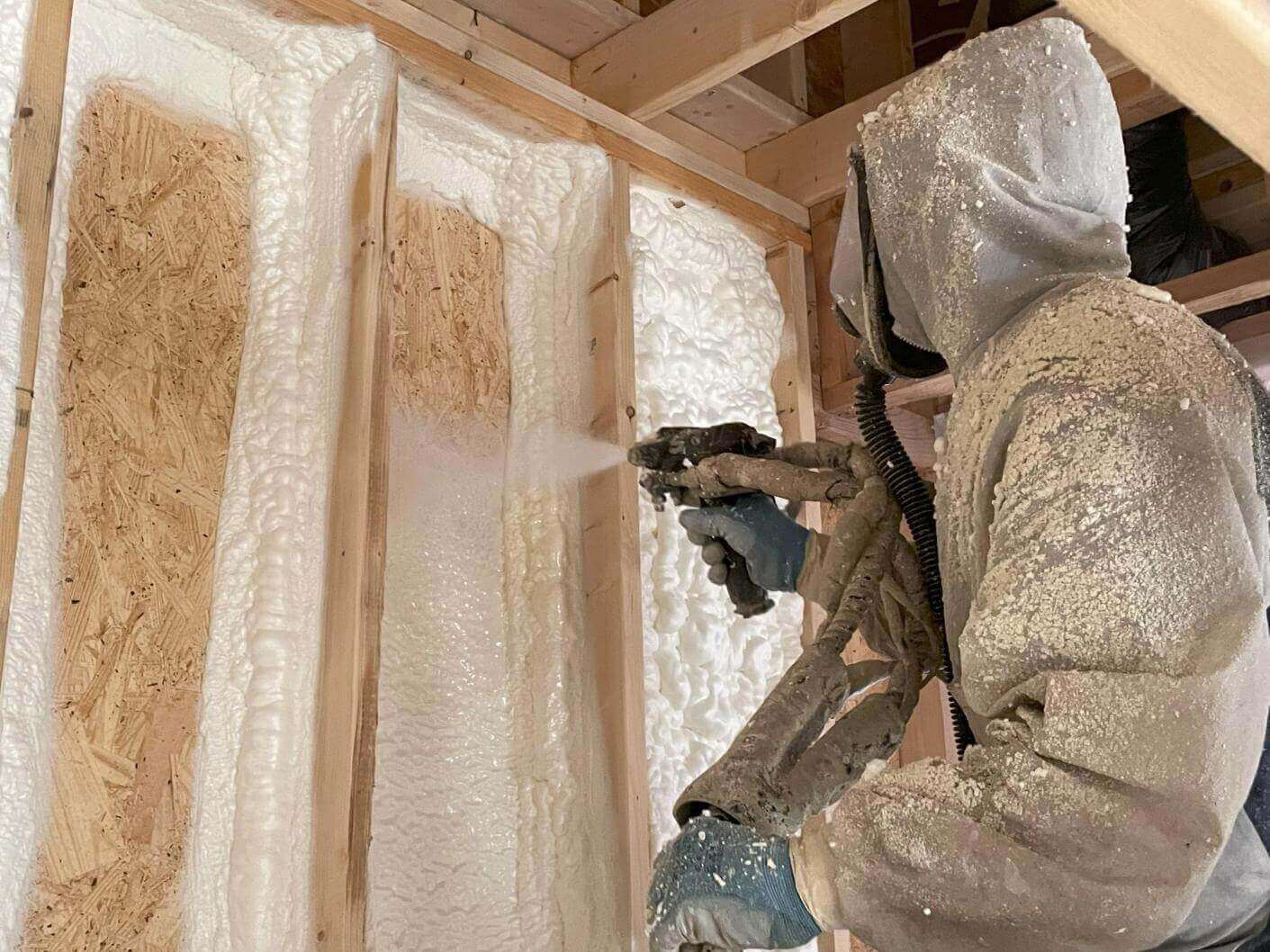The Process of Using Spray Foam: What You Required to Know
The Process of Using Spray Foam: What You Required to Know
Blog Article
Spray Foam: The Ultimate Remedy for Air Sealing and Insulation
Spray foam insulation has arised as a leading solution for effective air securing and thermal insulation, offering a distinct combination of homes that set it apart from standard techniques. Understanding the complete extent of its advantages, installation procedures, and contrasts with various other insulation types is essential for making educated choices.
What Is Spray Foam?
Spray foam is a versatile insulation product that combines the concepts of air sealing and thermal resistance to enhance power effectiveness in buildings. Composed mostly of polyurethane or various other comparable compounds, spray foam is applied as a fluid that expands upon call with surface areas, creating a strong, constant layer of insulation. This distinct home enables it to fill up voids, fractures, and voids that typical insulation materials might neglect, supplying a remarkable air seal.
There are two main sorts of spray foam: open-cell and closed-cell. Open-cell spray foam is lighter and a lot more versatile, using exceptional noise absorption and a lower R-value per inch - Spray Foam. On the other hand, closed-cell spray foam is denser, supplying a greater R-value, wetness resistance, and added architectural honesty to developing elements
The application process normally involves specific tools, making certain a seamless application that sticks to various substratums, including metal, concrete, and wood. This flexibility makes spray foam suitable for both new buildings and retrofitting existing frameworks. Its capacity to produce a closed obstacle significantly adds to lowering power consumption and boosting indoor air quality, thereby making it a recommended selection among property owners and building contractors alike.
Advantages of Spray Foam Insulation
Among the most substantial benefits of spray foam insulation is its extraordinary capability to produce a constant air obstacle, which efficiently decreases power loss. Unlike standard insulation materials, spray foam broadens to load spaces and splits, ensuring that air leak is substantially lowered. This characteristic not just boosts energy efficiency but likewise brings about decrease energy expenses with time.
In addition, spray foam insulation offers superior thermal resistance, contributing to an extra secure interior environment. Its high R-value per inch allows for effective insulation in constrained rooms, making it perfect for attic rooms, wall surfaces, and crawl areas. Additionally, the moisture-resistant homes of spray foam aid stop mold and mold development, advertising much healthier living problems.
An additional vital advantage of spray foam insulation is its sound-dampening qualities (Spray Foam). It properly minimizes noise transmission in between spaces, creating a quieter and a lot more comfy home environment. The resilience of spray foam also stands apart, as it does not sag or resolve gradually, keeping its performance throughout its life-span
Exactly How Spray Foam Functions
Comprehending how spray foam insulation functions is essential for valuing its efficiency in air securing and thermal resistance. Spray foam insulation contains two key elements: isocyanate and polyol material. When these components are combined, they undertake a chemical reaction that creates the material to broaden swiftly, creating a thick foam that fills up cracks, voids, and tooth cavities.
As the foam broadens, it follows surfaces, forming a closed seal that considerably reduces air seepage. This characteristic makes spray foam insulation extremely efficient at protecting against drafts and wetness infiltration, which can bring about energy loss and damages gradually. In addition, the closed-cell variation of spray foam provides exceptional thermal resistance as a result of its rigid structure, efficiently lessening warmth transfer.
The special residential or commercial properties of spray foam permit it to adapt to irregular surfaces, ensuring extensive insurance coverage and a smooth barrier. Consequently, spray foam insulation not just boosts power performance however likewise contributes to enhanced indoor air top quality by minimizing the accumulation of pollutants and irritants. Inevitably, recognizing the auto mechanics behind spray foam highlights its function as a superior option for insulation and air securing in both residential and industrial applications.
Installment Refine Overview

Prior to setup, the space has to be effectively cleansed and prepped, guaranteeing that surface areas are without moisture, dust, and debris. This action is essential due to the fact that pollutants can compromise adhesion and overall performance. Once the area is prepared, the application entails blending both elements of the spray foam, which increases upon get in touch with and fills up voids successfully.
Trained specialists need to perform the setup, utilizing customized equipment to ensure uniform coverage and read here optimum thickness. Security preventative measures, including using safety gear and ensuring appropriate air flow, are important during this process. After application, the foam normally remedies rapidly, developing a solid barrier that improves power effectiveness.
Contrasting Spray Foam to Traditional Insulation
When evaluating insulation alternatives, spray foam insulation attracts attention in contrast to conventional materials such as fiberglass and cellulose. Among the primary benefits of spray foam is its premium air securing capacities. Unlike fiberglass and cellulose, check it out which can allow air seepage, spray foam broadens upon application, filling up gaps and crevices to produce a closed seal. This causes improved energy performance, as less heated or cooled air runs away the home, causing reduced utility bills.
Additionally, spray foam offers a higher R-value per inch than traditional insulation kinds, using even more efficient thermal resistance in a thinner profile. This particular is especially helpful precede with limited dental caries deepness. Spray foam is resistant to wetness and mold development, which can be a substantial problem with cellulose and fiberglass, particularly in moist environments.
Nevertheless, spray foam insulation normally carries a greater upfront price than its conventional equivalents. Home owners must weigh this preliminary financial investment against long-term power savings and performance benefits. Eventually, while both insulation types serve their objective, spray foam arises as a more sophisticated remedy for contemporary insulation demands, particularly in terms of air securing and thermal efficiency.

Conclusion
In recap, spray foam insulation stands for a highly efficient service for achieving optimal air sealing and thermal resistance. Its special properties, consisting of moisture resistance and noise dampening, make it appropriate for various applications in both new buildings and retrofitting tasks (Spray Foam). The preliminary costs might be higher contrasted to traditional insulation materials, the long-term advantages, such as considerable energy financial savings and enhanced interior air high quality, justify the financial investment and emphasize its worth in modern-day building practices.
Spray foam insulation has actually emerged as a leading remedy for efficient air sealing and thermal insulation, supplying a distinct combination of residential properties that set it apart from typical methods.Spray foam is a flexible insulation material that incorporates the principles of air sealing and thermal resistance to enhance energy news performance in buildings.When reviewing insulation options, spray foam insulation stands out in comparison to traditional products such as fiberglass and cellulose. Inevitably, while both insulation kinds serve their purpose, spray foam arises as a much more advanced solution for modern-day insulation demands, especially in terms of air securing and thermal effectiveness.
In recap, spray foam insulation stands for an extremely efficient option for achieving optimal air securing and thermal resistance.
Report this page